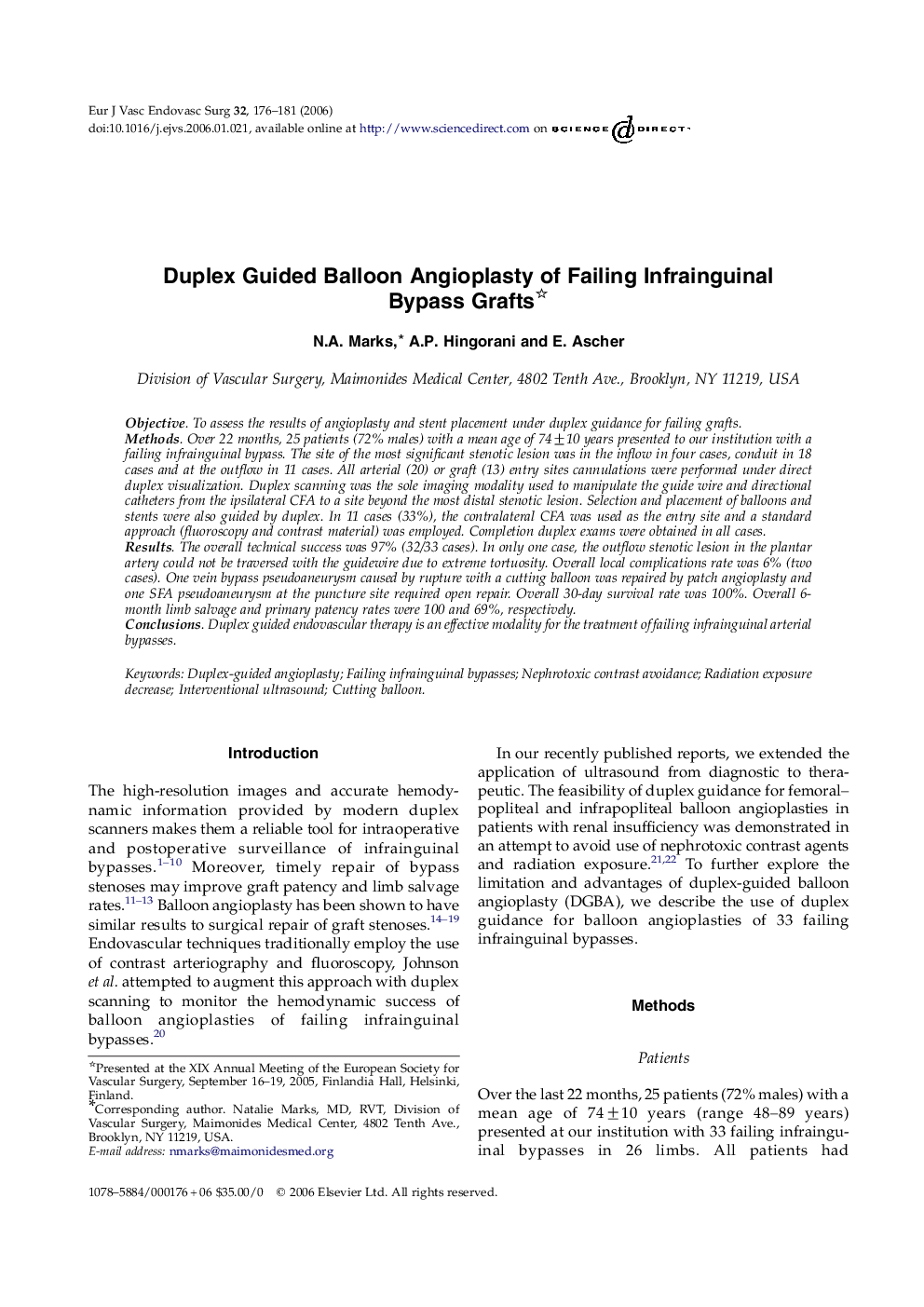| Article ID | Journal | Published Year | Pages | File Type |
|---|---|---|---|---|
| 2915033 | European Journal of Vascular and Endovascular Surgery | 2006 | 6 Pages |
ObjectiveTo assess the results of angioplasty and stent placement under duplex guidance for failing grafts.MethodsOver 22 months, 25 patients (72% males) with a mean age of 74±10 years presented to our institution with a failing infrainguinal bypass. The site of the most significant stenotic lesion was in the inflow in four cases, conduit in 18 cases and at the outflow in 11 cases. All arterial (20) or graft (13) entry sites cannulations were performed under direct duplex visualization. Duplex scanning was the sole imaging modality used to manipulate the guide wire and directional catheters from the ipsilateral CFA to a site beyond the most distal stenotic lesion. Selection and placement of balloons and stents were also guided by duplex. In 11 cases (33%), the contralateral CFA was used as the entry site and a standard approach (fluoroscopy and contrast material) was employed. Completion duplex exams were obtained in all cases.ResultsThe overall technical success was 97% (32/33 cases). In only one case, the outflow stenotic lesion in the plantar artery could not be traversed with the guidewire due to extreme tortuosity. Overall local complications rate was 6% (two cases). One vein bypass pseudoaneurysm caused by rupture with a cutting balloon was repaired by patch angioplasty and one SFA pseudoaneurysm at the puncture site required open repair. Overall 30-day survival rate was 100%. Overall 6-month limb salvage and primary patency rates were 100 and 69%, respectively.ConclusionsDuplex guided endovascular therapy is an effective modality for the treatment of failing infrainguinal arterial bypasses.
